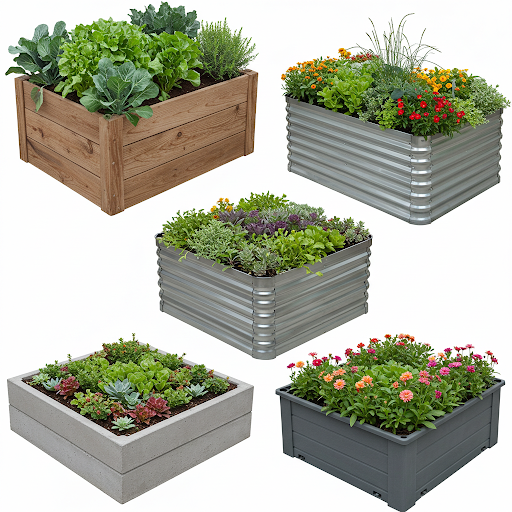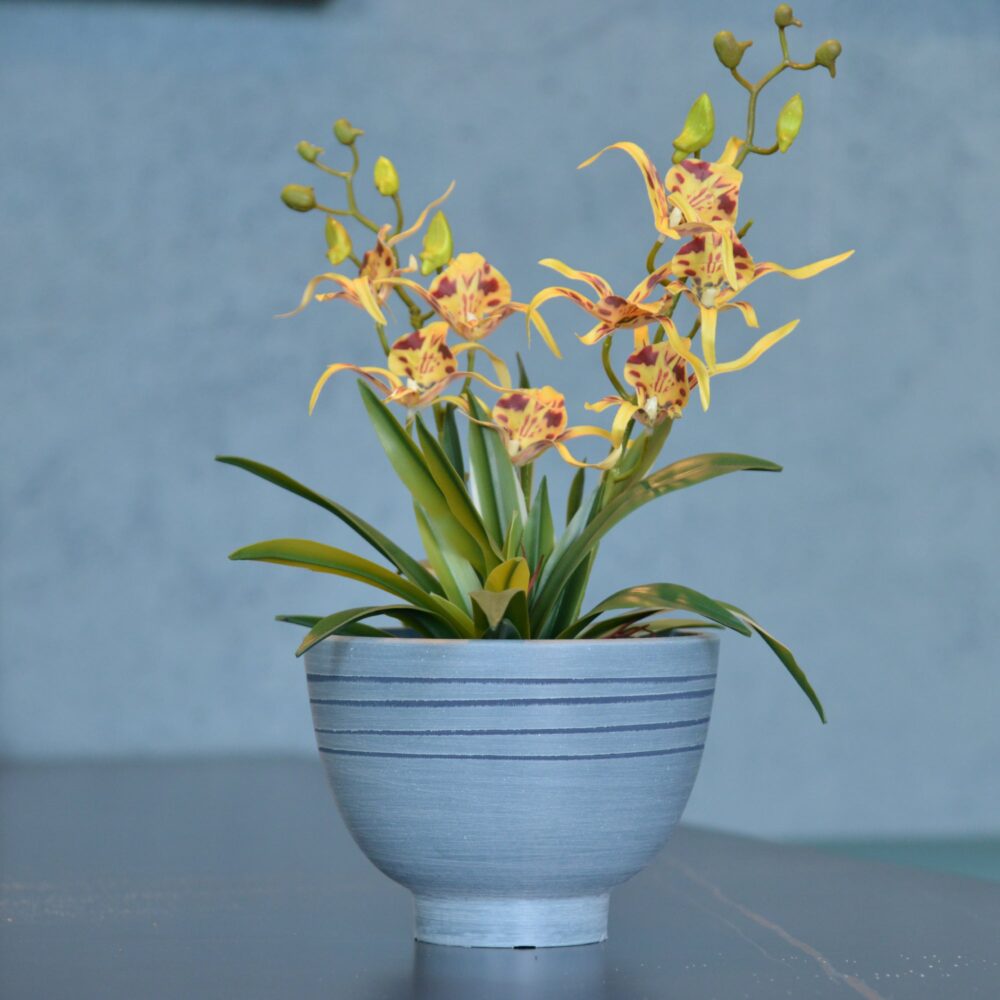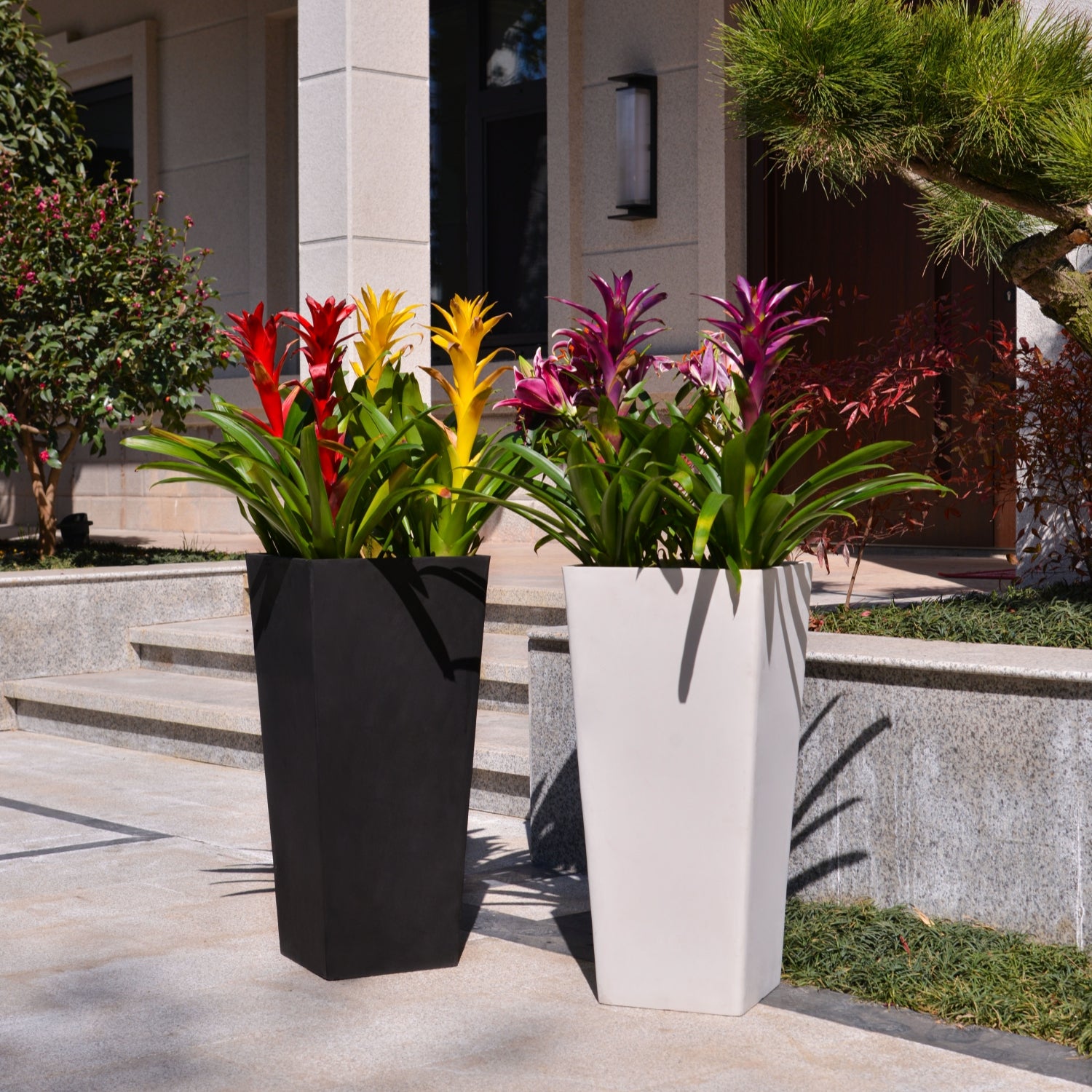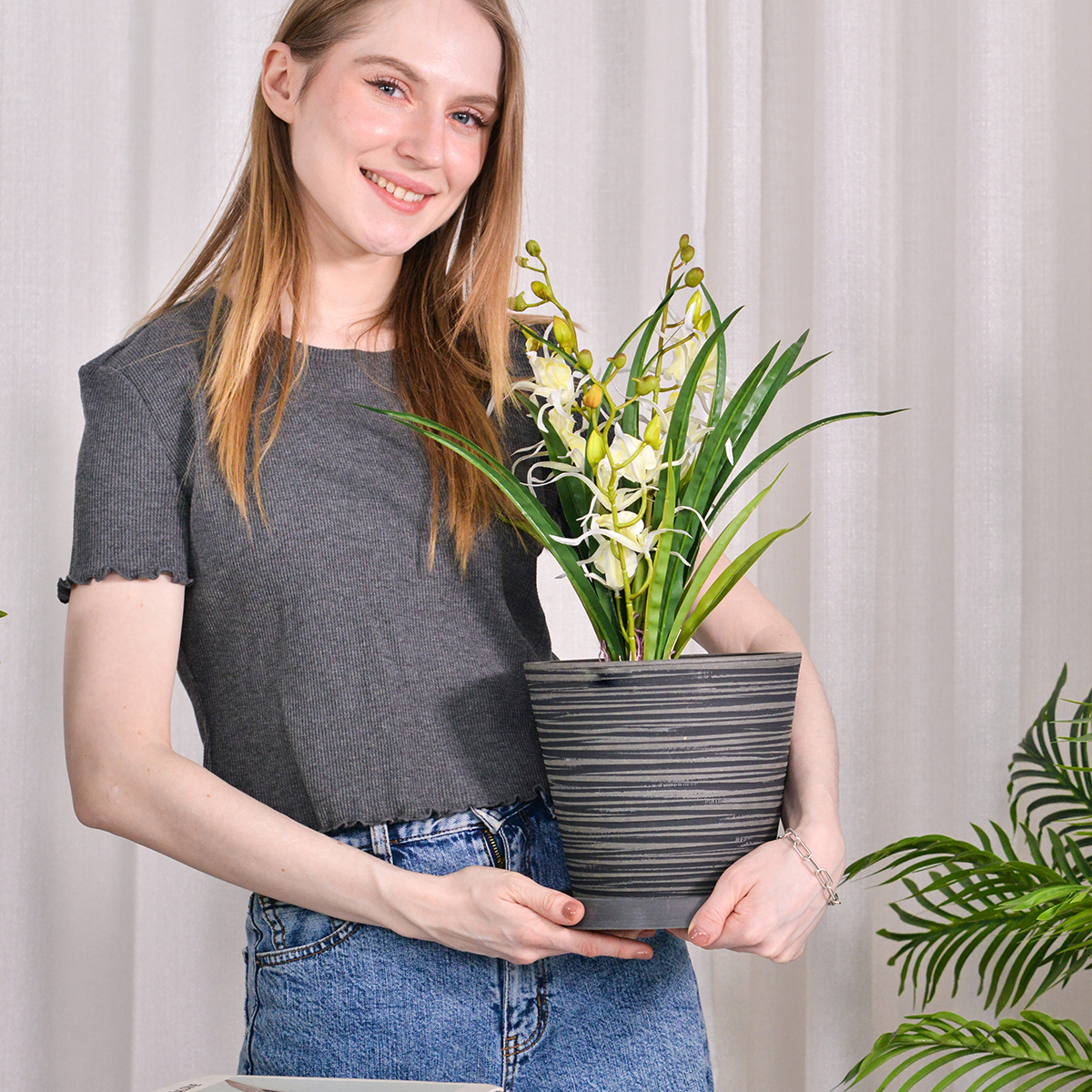What Material Should I Choose for a Planter Box? A Guide for Every Gardener
Choosing the right material for your planter box is a crucial first step in creating a thriving container garden. The material you select will impact the planter’s durability, aesthetics, cost, and even the health of your plants. With a wide variety of options available, it’s essential to understand the pros and cons of each to make the best choice for your needs. Here’s a comprehensive guide to help you decide what material is right for your planter box project.

Common Planter Box Materials and Their Characteristics:
1. Wood: A classic and popular choice, wood offers a natural and often cost-effective option.
- Pros:
- Aesthetics: Wood provides a warm, natural look that complements most outdoor spaces.
- Ease of Use: Wood is relatively easy to cut, drill, and assemble, making it ideal for DIY projects.
- Affordability: Untreated lumber like pine or fir can be budget-friendly.
- Good Insulation: Wood can help insulate the soil, protecting roots from extreme temperature fluctuations.
- Cons:
- Susceptible to Rot and Pests: Untreated wood can rot, decay, and attract pests over time, especially in damp conditions.
- Maintenance Required: To prolong its lifespan, wood often needs regular sealing, staining, or painting.
- Treated Lumber Concerns: While pressure-treated wood resists rot and insects, some gardeners are concerned about chemicals leaching into the soil, especially when growing edibles. Cedar and redwood are naturally more resistant to decay but can be more expensive.
2. Plastic: A versatile and low-maintenance option that comes in various styles and colors.
- Pros:
- Durability: Plastic is generally resistant to rot, pests, and weather damage.
- Low Maintenance: Plastic planters typically require minimal upkeep.
- Lightweight: Easy to move and rearrange your garden.
- Affordability: Often more budget-friendly than wood or metal.
- Recycled Options: Many plastic planters are made from recycled materials, making them an eco-conscious choice.
- Cons:
- Aesthetics: Can sometimes look less natural or high-end compared to other materials.
- Can Become Brittle: Some types of plastic can become brittle or fade over time, especially in direct sunlight.
- Poor Insulation: Plastic can heat up quickly in the sun, potentially harming plant roots.
3. Metal: Offers a modern and often very durable option for planter boxes.
- Pros:
- Durability: Metal planters, especially those made from galvanized steel or aluminum, are very long-lasting and can withstand harsh weather.
- Pest Resistance: Metal is impervious to pests and rot.
- Modern Look: Metal can provide a sleek and contemporary aesthetic.
- Cons:
- Cost: Metal planters can be more expensive than wood or plastic.
- Heat Retention: Metal can absorb and retain heat, which can be detrimental to roots in hot climates. Consider placing metal planters in partial shade or using a light-colored finish.
- Potential for Rust: Some metals, like untreated steel, can rust over time, although this can be mitigated with proper coatings.
- Weight: Metal planters can be heavy, especially larger ones.
4. Concrete and Stone: For a sturdy and permanent planter solution with a natural, earthy feel.
- Pros:
- Durability: Concrete and stone are extremely durable and can last for decades.
- Stability: Their weight makes them very stable and resistant to tipping.
- Good Insulation: Concrete can provide good insulation for roots.
- Water Retention: Concrete can help retain moisture in the soil.
- Cons:
- Weight: Extremely heavy and difficult to move once placed.
- Cost: Can be quite expensive, especially for larger planters.
- Potential for Cracking: Concrete can crack in freezing temperatures or due to ground movement.
- Drainage: Proper drainage is crucial with concrete planters to prevent waterlogging.
5. Composite Materials: Often made from a blend of recycled plastic and wood fibers, offering a balance of durability and aesthetics.
- Pros:
- Durability: Resistant to rot, pests, and weather.
- Low Maintenance: Requires minimal upkeep.
- Aesthetics: Can mimic the look of real wood in various colors and finishes.
- Eco-Friendly Options: Often made from recycled materials.
- Cons:
- Cost: Can be more expensive than traditional wood or plastic.
- May Not Look Exactly Like Wood: While they can mimic the appearance of wood, they might not have the exact natural texture.
Factors to Consider When Choosing:
- Budget: How much are you willing to spend on your planter box?
- Desired Aesthetic: What look are you trying to achieve in your garden or outdoor space?
- Durability and Longevity: How long do you want the planter box to last?
- Weight and Portability: Will you need to move the planter box in the future?
- Type of Plants: Consider the specific needs of the plants you plan to grow, especially regarding drainage and temperature sensitivity.
- Maintenance: How much time and effort are you willing to invest in maintaining the planter box?

Conclusion:
The best material for your planter box ultimately depends on your individual needs and preferences. Consider the pros and cons of each option in relation to your budget, desired style, plant choices, and the amount of maintenance you’re willing to undertake. By carefully evaluating these factors, you can select the perfect material to create a beautiful and functional planter box for your gardening endeavors.
8 inch/10 inch Planter Indoor Plants, 2 Pack Modern Decorative Plant Pots with Drainage Hole, Cute Bowl Shape Flower Pots
By greenship-seo|2025-04-10T08:03:42+00:00January 9, 2025|Categories: Hand-carving Series|Tags: Decorative Flower Pots, Self-Watering Pots|
GreenShip 27inch Tall Planters for Porch, Large Outdoor Planter Pots with Drainage Hole
By greenship-seo|2025-04-10T06:27:21+00:00April 7, 2025|Categories: Hand-carving Series|Tags: Decorative Flower Pots|
11TH
By greenship|2024-08-13T02:50:25+00:00August 13, 2024|Categories: Hand-carving Series|
K2-11T
By greenship|2024-08-13T04:21:25+00:00August 13, 2024|Categories: Hand-carving Series|
KC3-14A
By greenship|2024-08-16T06:26:30+00:00August 16, 2024|Categories: Hand-carving Series|
KC2-21G
By greenship|2024-08-13T06:19:08+00:00August 13, 2024|Categories: Hand-carving Series|






